About
Visit
Museum
Photos
Video
News
Events
Due to maintenance, the Statehouse Museum is closed January 17 through mid-March.



STATEHOUSE NEWS

The Capitol Square Review and Advisory Board (CSRAB) is proud announce the acceptance of a $2,000 grant from The Little Garden Club of Columbus. The grant was used to purchase flowers that have been planted on Veterans Plaza and the Statehouse grounds. The flower pattern will form the American and Ohio flags.
“We are extremely grateful to the Little Garden Club of Columbus for their generous donation. The Club’s support enhances the Capitol Square for all Ohioans to enjoy-–CSRAB is proud of our partnership that continues to bear beautiful fruit,” said William E. Carleton, executive director of CSRAB.
The Little Garden Club of Columbus’ commitment to Capitol Square will ensure that the Ohio Statehouse continues to be a symbol of elegance and grandeur for the people of Ohio. The Ohio Statehouse grounds serves as a prominent green oasis in the heart of the capital city. More than 100 plant species are maintained on the grounds; including a variety of trees, shrubs, perennials and annuals.
Situated on 10 acres in the heart of downtown Columbus, with the backdrop of the magnificent Greek Revival Capitol building, the Ohio Statehouse grounds encompass expansive pastoral green spaces, flower gardens and sculpture honoring Ohio’s past. The grounds continue to serve as a gathering place for both historic rallies and everyday events.
To view this press release and others, visit ohiostatehouse.org
# # #
The Ohio Statehouse today announced the 2016 Summer Fridays at the Statehouse schedule of performances. The Capitol Square Review and Advisory Board (CSRAB) has partnered with 12 central Ohio performing arts groups to present, Summer Fridays at the Statehouse. Summer Fridays is a FREE outdoor lunch-time performing arts series staged on the West Plaza (High Street) of the historic Ohio Statehouse. Summer Fridays at the Statehouse provides an opportunity for the public and downtown community to gather on Capitol Square to experience some of Columbus’ diverse arts groups and to visit the beautiful Ohio Capitol.
This year’s participating performing arts groups include a diverse cross section of central Ohio’s arts organizations.
Scheduled 2016 performances include:
June 3 – Dave Powers
• Timmy’s Meltdown
June 10 – Patchwork Parlor Band
• J&C's Diggity Dogs
June 17 – The Alliance Chorus
• J&C's Diggity Dogs
June 24 – OhioDance
• Paddy Wagon
July 8 – RMT
• AROMAKU
July 15 – Two For The Road
• Sophie’s Gourmet Pierogi
July 22 – Columbus Symphony Youth Orchestra
• Philly Buster Food Truck
July 29 – Columbus Chorus of Sweet Adelines
• Paddy Wagon
August 5 – Franklin Xpress
• The Blue Chew
August 12 – Jimmy’s Last Chance
• Pitabilities
August 19 – Zach Whitney & Rosin Jaw
• Paddy Wagon
August 26 – TBA
• Philly Buster Food Truck
Summer Fridays at the Statehouse will take place Fridays, June 3 through August 26 (absent July 1). The programs will run between noon and 1 p.m. The series gives the downtown community and visitors the opportunity to enjoy the majestic Statehouse grounds while some of Columbus’ best arts groups perform. There is no better place downtown to enjoy your lunch this summer!
Visitors are encouraged to bring their lunch or purchase lunch from one of the food trucks scheduled for lunch service during each Friday concert.
Performances will be canceled in the event of inclement weather. Up to the minute performance information about Summer Fridays at the Statehouse will be posted on the front page of the Ohio Statehouse website at ohiostatehouse.org. Summer Fridays at the Statehouse audience members are encouraged to visit the Statehouse website each morning of the scheduled performances to retrieve last minute performance information.
Media support for Summer Fridays at the Statehouse is provided by 10TV.
High resolution photos from the 2015 season are available at: http://bit.ly/1TgXw9x
Facts About Downtown Columbus:
- Approximately 70,000 employees work downtown.
- Is home to thousands of residents.
- Downtown Columbus is one of the safest places in central Ohio.
- 30,000 students attend classes at one of four downtown colleges or universities.
- Downtown has accessible public transportation service; COTA bus stops located near the Ohio Statehouse; the CBUS circulator is a great option.
To view this press release and others, visit ohiostatehouse.org.
# # #

2015 Vintage "Base Ball" Game
Members of the 131stOGA, representing the Ohio Senate and the Ohio House of Representatives, will take a break from partisan politics as Republicans and Democrats come together and cross the aisle to form the Capitol Cannons. The 2016 Cannons will be skippered by Senator Cliff Hite.
The “titanic struggle” takes place Tuesday, May 24 at 5:30 p.m. on the west lawn (High Street) of the Ohio Statehouse. The two teams will be fighting for bragging rights and the all-important symbol of victory, the Richard Schuricht Memorial Cup. Prior to the game, the Statehouse’s 1st Ohio Light Artillery, Battery A will provide a cannon firing demonstration and discussion of leisure activities Civil War soldiers would have used to pass the time in camp.
Additionally, Tracy Martin—baseball historian and member of the Muffins—will exhibit a portion of his massive collection of baseball equipment and ephemera. Martin’s collection highlights the evolution of the game and has been featured at the Cincinnati Reds Hall of Fame and Museum, The Smithsonian National Museum of American History and The National Baseball Hall of Fame and Museum.
Photos from the 2015 Ohio Statehouse vintage base ball game can be found here:
http://bit.ly/1TCgYg9
About the Ohio Village Muffins and vintage base ball
Formed in 1981, the Ohio Village Muffins were the first vintage base ball team in America to play a set summer schedule, and the Muffins also hosted the founding meeting of the Vintage Base Ball Association (VBBA). The Muffins play in uniforms period correct to the 1860s; the uniform consists of plain long pants, a white shirt with a bright shield containing the team emblem, a pill box hat, a leather belt and a bow tie. Recreational activities, especially base ball, were becoming more ingrained in American society during the middle part of the 19th century. The Muffins represent a changing America and highlight a game that would transcend all others and become America’s National Pastime.
Using vintage base ball equipment, the game is scheduled for seven innings and will be governed under The Rules and Regulations of the Game of Base Ball Adopted by the National Association of Base-Ball Players, March 14, 1860. Major rule differences between vintage base ball and modern baseball are listed below.
- The ball is pitched underhanded from anywhere behind the pitcher's line.
An out is declared if:
- A hit ball is caught on the fly or the first bound, including foul tips to the catcher.
- A base runner overruns any base (including first) and is touched by the ball in the hands of an adversary.
Enjoy an evening downtown, as you watch the Ohio General Assembly Capitol Cannons host the Ohio Village Muffins in an exhibition vintage base ballgame. Come early and enjoy a ball park dinner. Concessions will be provided by the Paddy Wagon food truck.
Support for this event is provided by the Ohio Lobbying Association, the Ohio Village Muffins, the Ohio Village Singers, the Capitol Square Foundation and the 1st Ohio Light Artillery, Battery A.
To view this press release and others, visit ohiostatehouse.org.
# # #
On a cool, damp morning the body of slain President Abraham Lincoln was laid in repose at the Ohio Statehouse April 29, 1865; from 9:30 a.m. to 6 p.m. An estimated 50,000 Ohioans paid their respect to the “Savior of the Union.”
It is difficult to articulate in words how the assassination of President Abraham Lincoln affected the nation. To put it simply, the murder of President Lincoln less than three weeks after the end of the American Civil War and less than two months into his second term was a cataclysmic event. The “Lincoln Funeral Train” traveled more than 1,600 miles and during the 13 day trip one third of the population of the United States witnessed the train pass through their community.
The Capitol Square Review and Advisory Board (CSRAB) will commemorate the 151st anniversary of the repose of President Abraham Lincoln in the Ohio Capitol Friday, April 29, 2016. CSRAB is honored to commemorate the Columbus memorial visit the Lincoln Funeral Train made during its journey from Washington D.C. to Springfield, Illinois in the spring of 1865. Batesville Casket Company created the 1865 casket for Lincoln, and has generously provided an accurate replica for this event. The 1st Ohio Light Artillery, Battery A, a group of Civil War re-enactors, will provide an honor guard for a replica of Lincoln’s casket from 10 a.m. until 3 p.m. This will take place on the site where the slain President lay in state in the Ohio Statehouse Rotunda on April 29, 1865. This is a wonderful opportunity to experience the Ohio Statehouse like few Ohioans have and help commemorate this historic event. The public is invited to bring fresh flowers into the Ohio Statehouse Rotunda to add to the display of a replica casket.
In conjunction with the Repose of Lincoln, 1st Ohio Light Artillery, Battery A will hold the 2016 Ohio Statehouse Civil War Encampment. Learn what camp life was like during the Civil War. Walk among soldiers’ tents, see how to fire the cannon every half hour and help the Ladies Aid Society deliver comfort to the troops. Historical re-enactors from 1st Ohio Light Artillery, Battery A and other groups will demonstrate Civil War life, cooking and medical practices. Cannon firings will occur every half hour on the West Plaza of the Ohio Statehouse. This program is supported by the 1stOhio Light Artillery, Battery A.
EXHIBITS AT THE OHIO STATEHOUSE
General John C. Caldwell and the Lincoln Funeral Train
April 25 - May 2, 2016
Ohio Statehouse North Hallway, 1 Capitol Square, downtown Columbus
614/752-9777
Free!
General John Curtis Caldwell answered the call of duty at the outbreak of the American Civil War. As a brigade commander and eventual corps commander of the Army of the Potomac, he participated in some of the most ferocious fighting between the North and South. Travelling with the Union army from one battlefront to the next, Caldwell was wounded twice.
On April 20, 1865, General Caldwell received a letter from the War Department advising him that he had been appointed to the "Guard of Honor" that was to accompany President Lincoln’s remains "from the city of Washington to Springfield, Illinois, and continue with them until they are consigned to their final resting-place."
A partial list of objects in the exhibit are: a War Department pass for the President Lincoln’s funeral train, a silver tassel from the president’s catafalque, a mourning badge and ribbon and a funeral time table from the slain president’s Columbus repose.
The Assassination of President Abraham Lincoln
April 25 - May 2, 2016
Ohio Statehouse North Hallway, 1 Capitol Square, downtown Columbus
614/752-9777
Free!
A special exhibit of reproduction images from the Library of Congress tells the story of President Abraham Lincoln’s assassination and the men and woman named as conspirators along with the fate. This exhibit is for mature audiences.
The Lincoln Funeral Train in Pictures and Photos
April 25 - May 2, 2016
Ohio Statehouse North Hallway, 1 Capitol Square, downtown Columbus
614/752-9777
Free!
This photography exhibit begins with the assassination of our nation’s 16th president, Abraham Lincoln; it follows his funeral train route from Washington D.C. to Springfield, Illinois, and focuses on how he was honored at each stop. This exhibit will bring to life one of those stops—the Ohio Statehouse in Columbus—where nearly 50,000 citizens paid their respects. Reproduction images are courtesy of the Library of Congress.
# # #
Members of the Capitol Square Review and Advisory Board (CSRAB) will meet Thursday, April 21, 2016 at the Ohio Statehouse in downtown Columbus, OH. The business meeting will be held in the State Room (room #108) and will begin at 10 a.m. The meeting is open to the public. The meeting agenda is available upon request.
# # #
The Capitol Square Review and Advisory Board (CSRAB) in partnership with the Ohio Environmental Protection Agency (OEPA), Keep Ohio Beautiful, and The Davey Tree Expert Company will celebrate Earth Day with a tree planting on Capitol Square. A presentation with Speaker of the Ohio House, and CSRAB Chairman, Clifford A. Rosenberger and OEPA Director Craig Butler will be followed by a tree planting ceremony of an American Beech that was donated by Davey Tree Expert Co. Since 2005, CSRAB has planted 57 new trees on Capitol Square adding 20 native species to represent the diverse landscape of Ohio here on the grounds of the Ohio Statehouse.
Earth Day helps to inspire and educate all Ohioans to improve and beautify their local neighborhoods along with creating greener, more beautiful environments by taking action as individuals and communities. To commemorate this day, Keep Ohio Beautiful will host a public event at the North Plaza of the Ohio Statehouse, from 11 a.m. to 11:30 a.m.
The event will be kicked off with remarks from representatives of the partnering organizations, including OEPA Director Craig Butler and others. This will be followed by the planting of an American beech tree on the Ohio Statehouse grounds.
“This is another example of great companies and organizations coming together here at the Ohio Statehouse to help educate the people of Ohio on the importance and benefits of planting trees,” said William Carleton, executive director, CSRAB.
Speaker of the Ohio House Clifford A. Rosenberger will be joined by Ohio legislators; OEPA Director Craig Butler; William Carleton, executive director, Capitol Square Review and Advisory Board; Karen Wise, president, of Keep Ohio Beautiful; and Michael Mennett,executive director, Keep Ohio Beautiful. See you Friday, April 22 at the Ohio Statehouse!
###
The Capitol Square Review and Advisory Board (CSRAB) has approved recommendations to further improve security at the Ohio Statehouse. X-ray equipment will be installed in the coming months. Once installed, CSRAB personnel will screen all bags entering the Ohio Statehouse at the three public entrances.
Additionally, security turnstiles will be installed; individuals with an Ohio Statehouse ID will be permitted to enter the Ohio Capitol through those entrances.
This security upgrade is a proactive measure that provides for the safety of those who work in and visit the Ohio Statehouse.
# # #
Members of the Capitol Square Review and Advisory Board (CSRAB) will meet Thursday, March 10, 2016 at the Ohio Statehouse in downtown Columbus, OH. The business meeting will be held in the State Room (room #108) and will begin at 10 a.m. The meeting is open to the public. The meeting agenda is available upon request.
# # #
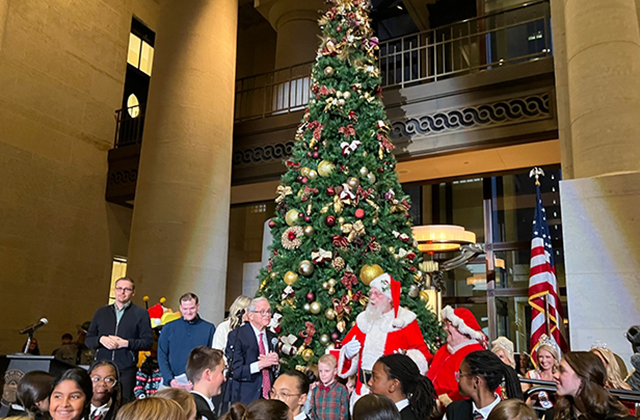 Holiday Festival and Tree Lighting 2025
Holiday Festival and Tree Lighting 2025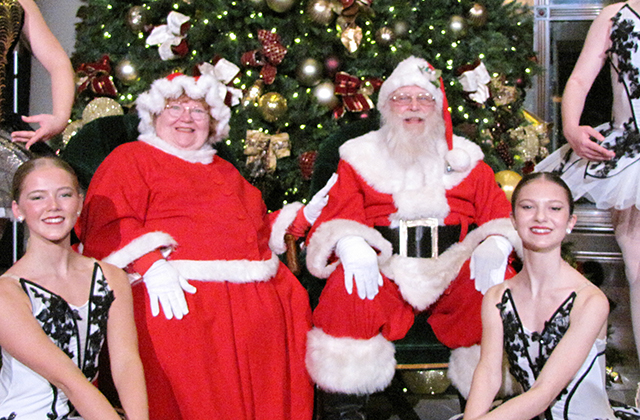 Holiday Santa Photos 2025
Holiday Santa Photos 2025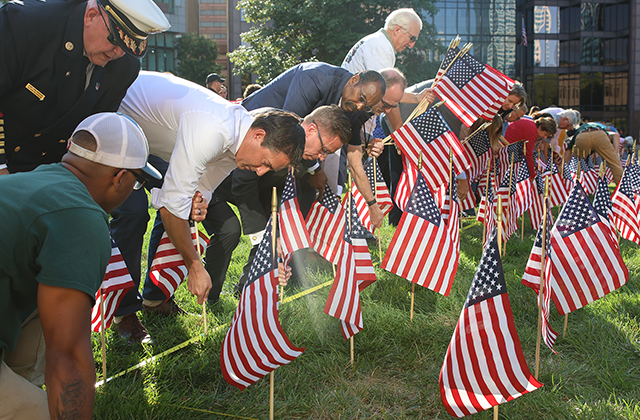 Flags for 9-11 in 2025
Flags for 9-11 in 2025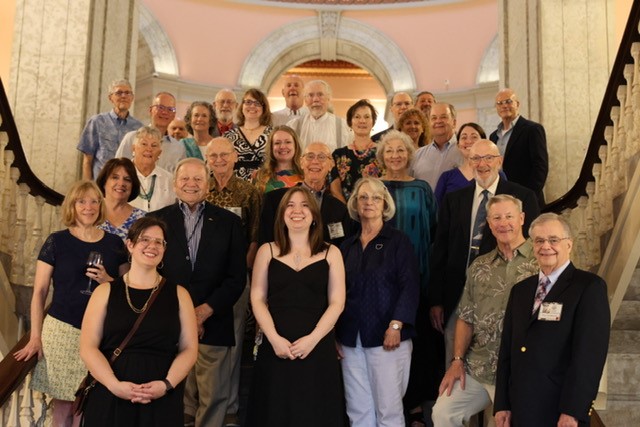 2025 Volunteer Appreciation Dinner
2025 Volunteer Appreciation Dinner America 250-Ohio
America 250-Ohio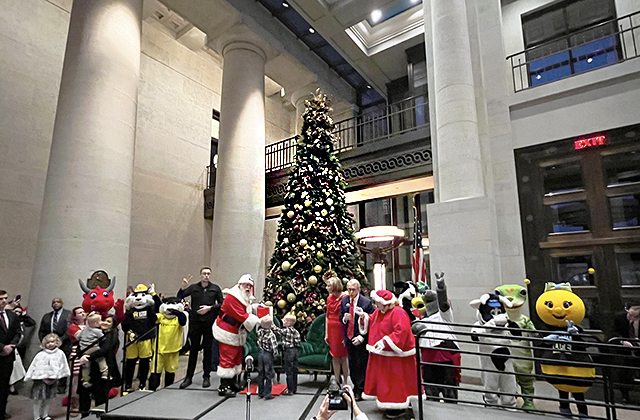 Holiday Festival and Tree Lighting 2024
Holiday Festival and Tree Lighting 2024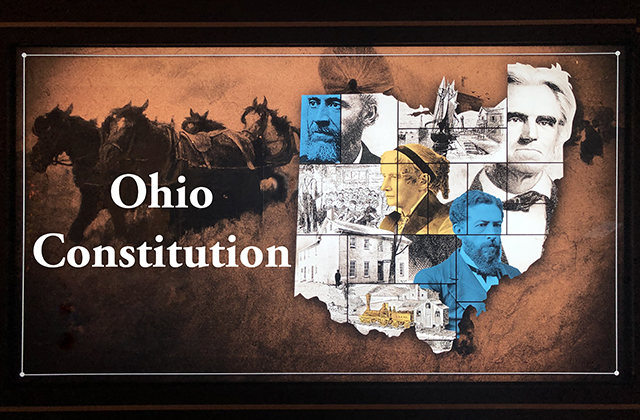 Ohio Constitution Videos
Ohio Constitution Videos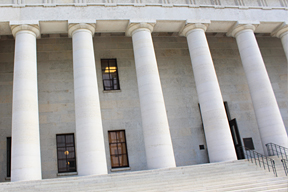 Ohio Statehouse Videos
Ohio Statehouse Videos






